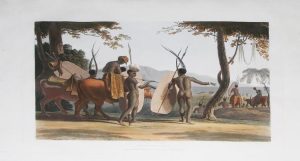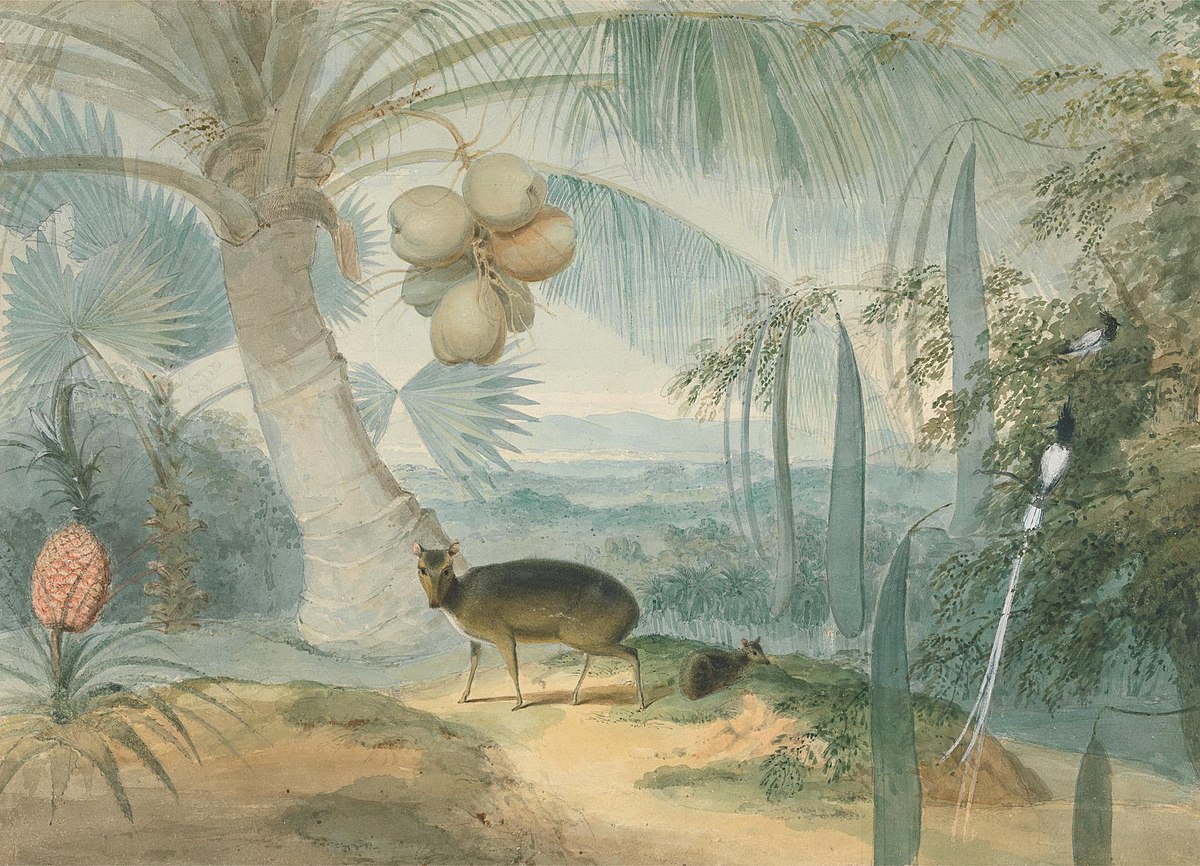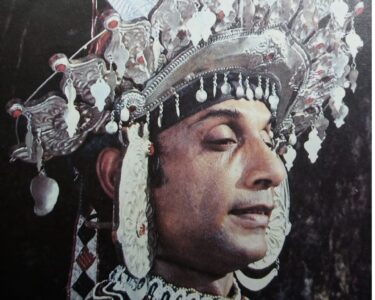Samuel Daniell, a luminary among British artists in the 19th century, played a pivotal role in shaping the artistic narrative of Ceylon (modern-day Sri Lanka). Born in 1775 into the esteemed Daniell family of artists, Samuel’s artistic journey was marked by a profound exploration of the island’s natural beauty, vividly captured in his sketches and aquatints.

In 1805, Samuel set sail for Ceylon, stepping onto its shores with a dual role as Assistant Secretary to the Board of Revenue and Commerce and Ranger of the Woods and Forests. This dual capacity not only reflected his administrative responsibilities but, more importantly, allowed him to indulge his insatiable appetite for exotic subjects and exploration.
During his six years in Ceylon, Samuel Daniell’s artistic vision flourished. He produced twelve remarkable aquatints based on his watercolor sketches, showcasing the island’s extraordinary fauna and flora. These aquatints, engraved with meticulous detail, presented a visual feast of Ceylon’s biodiversity, depicting rare and colorful species previously undocumented by any artist on the island.
One of his notable works, “A picturesque illustration of the scenery, animals and natives of the Island of Ceylon,” published in 1808, became a testament to his artistic prowess. The aquatints within this publication offered a window into the captivating landscapes, wildlife, and indigenous people of Ceylon, preserving a visual record of the island’s unique charm.

Mount Lavinia,
Samuel Daniell’s artistic contributions extended beyond the canvas. His interactions with Sir Thomas Maitland, the Governor of Ceylon, revealed a close friendship that influenced his artistic endeavours. Samuel frequented Maitland’s residence in Mount Lavinia, drawing inspiration from the gardens, which became the backdrop for some of his aquatints.
The artist’s encounters with the island’s natural wonders, including a visit to an elephant kraal near Negombo, were chronicled by Maria Graham, the first English woman writer and visitor to Ceylon. These incidents, recounted in her book “Journal of a Residence in India” (1812), provide glimpses into Samuel Daniell’s immersive experiences in Ceylon.
Tragically, Samuel’s vibrant artistic career was curtailed by malaria in 1811. Despite his untimely demise, his legacy lived on through his exquisite drawings and aquatints. His personal belongings, including art materials and the set of two volumes titled “African Scenery & Animals,” were auctioned in Colombo, offering insights into the tools and possessions of an early 19th-century European artist.
Samuel Daniell’s Ceylonese chapter may have been short-lived, but the visual treasures he left behind continue to weave tales of the island’s natural splendor and cultural richness. His artistic legacy endures as a testament to the intersection of exploration, administration, and artistic expression in the enchanting landscapes of Ceylon.







